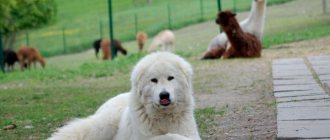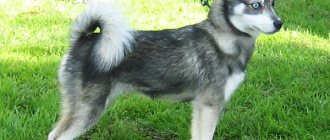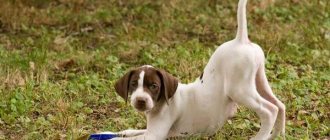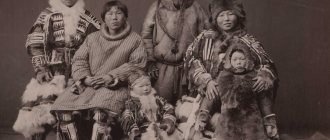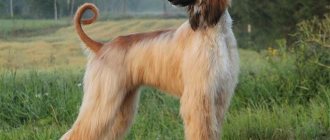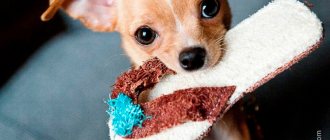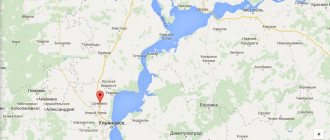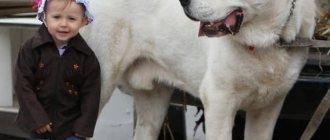The FCI classifier classifies pointing dog breeds into the seventh group, which is divided into two sections. In fact, there are more breed groups in the world that meet the required characteristics, but they are few in number and/or unrecognized for other reasons.
Hunting breeds of pointing dogs are used to track and retrieve game. Depending on the profile, there are breeds that work in water, on land and universal. Next, we will look at the dog breeds recognized by the Fédération Cynologique Internationale (FCI) for gun hunting, their names, photos and brief descriptions. Despite the large size of the group, all breeds have similar “traits”:
- Not prone to aggression.
- Usually not very social with other animals, but attached to the owner. Some breeds can work in pairs and even in packs, but after preliminary training.
- They are enthusiastic in their work , willingly and enthusiastically looking for game, having discovered the animal, they take a stance and bring the wounded animal without damaging it with their teeth.
- They are not inclined to protect the territory , although this indicator is very individual.
- They move quickly , have high endurance and the ability to navigate in space at lightning speed.
- They quickly and without hesitation switch to another target and carry out given commands.
- Mentally balanced , but prone to falling into a state of excitement.
- The speed of development and moral maturation of puppies is average, which excludes the use of dogs in work before passing tests (does not exclude training in field conditions, at the discretion and responsibility of the owner).
As mentioned above, pointing dogs belong to group number 7. Moreover, many Brakki have a second, unofficial name - Pointer. The “confusion” can be explained by long-term selection and the vast number of progenitors used to develop new breeds. According to FCI rules, for a breed to be recognized, it must be given a unique name and a guardian country.
Continental Cops
Continental pointers include more than 30 subgroups of hunting dogs, all of them are versatile, have a keen sense of smell, can endure any conditions, and are passionate when tracking. Also, search qualities are inherent from birth, so they do not require training. The most common types:
- griffons;
- spaniels;
- short-haired;
- British cops;
- Pointers.
Griffons
Griffons are considered one of the most ancient dogs in the world; most of the representatives are decorative pets that are distinguished by obedience and the ability to live in city apartments. Previously used for hunting small animals and rodents.
Griffon Korthals
Several countries are considered to be the place of origin of the Korthals Griffon: the Netherlands and Germany. Appeared for hunting small animals and hunting on water. It has a good sense of smell, versatility, can hunt in any weather, and notifies about a find with its stand. The character is based on strength, endurance, obedience and affection for the owner, but training and education are required.
Italian spinone
This large breed originated in Italy and was bred for hunting on land and water. It easily tolerates any climatic conditions because it has thick and hard hair. It can hunt small animals and game; its presence is indicated by a stand. The peculiarity of the breed is that the dog can pursue its prey for a long time, even in thickets and thorns. The character is characterized by kindness to the owner, loyalty, calmness, and endurance.
Griffon Bule
British and Irish cops
This group of cops includes only a few species, namely five, but four of them are considered the most popular dogs in the world. Most of the British and Irish pointing dogs were bred to hunt game and poultry and can work on land and water. These include setters and pointers.
Setters
Setters are a type of long-haired pointing hunting dog that originated in England. These include the English, Scottish and Irish setters. Most often they hunt quail, pheasant and other birds, search the area using scent, and take a stance when finding a victim.
English Setter
The English Setter is one of the oldest types of pointing dogs in Europe, which were used to hunt birds with a net. Now you can take it into the forests, since the setter is considered a gun dog that takes a stance and uses scent. He has patience, endurance, endurance, passion and kindness.
Gordon Setter
The Gordon Setter was bred in Scotland from black and tan setters and pointers. Used for hunting in the forest or field, it can cover long distances on rocks. Finds game and birds with the help of scent, developed sense of smell, takes a stance or pursues the victim. The dog requires education and training, but its character is characterized by loyalty, obedience, activity and peacefulness.
Irish Red Setter
The Irish Red Setter was bred in Ireland to hunt birds and large game. When found, it takes a stance in a “half-squat” position; hunting instincts are developed from birth; it is accustomed to chasing prey for hours. The pet is also friendly, sociable, understanding and learns quickly.
Irish Red and White Setter
The Irish Red and White Setter was also bred in Ireland for hunting and does best in fields or forests, hunting game and birds. Features include an excellent sense of smell, developed instincts and stability when finding a victim. The dog is distinguished by its sociability, kindness, affection for its owner, and activity.
Pointers
Pointers are considered one of the oldest English hunting dog varieties; they are distinguished by a good sense of smell and a “string” stance when finding a prey. Pets are characterized by patience, endurance and restraint. The most popular representative is the English Pointer.
English pointer
The English Pointer is a smooth-haired hunting dog that was bred in England to hunt birds and small game. They show their best performance when working in fields or rocky areas; they use their sense of smell and instincts, and can pursue prey. Their feature is a stand in the form of a stretched string. The Pointer is distinguished by tolerance, balance, ingenuity and kindness; they can accompany their owner even on long journeys.
You need to understand that when choosing a hunting dog, it is better to focus on qualities, inherent instincts and abilities, and not on appearance.
Appearance and characteristics
This dog shows its hunting nature by its appearance. Slender figure with well-developed muscle definition. Long paws for long running are located strictly under the body, parallel to each other. Convex scruff. The back is straight and muscular, with a slight slope towards the tail. Developed breasts smoothly transition into a toned stomach. The high-set tail is docked in half. The head has an elongated skull, a clear contour, in females the nose is more pointed, in males there is a slightly “hump-nosed” profile.
The nose is often colored coffee or black, less often beige. The occipital protuberance is moderately developed. Noteworthy are the developed brow ridges and a small groove in the middle of the forehead. Drop ears with rounded ends, reaching the corners of the lips. The eyes are of medium size, the eyelids fit tightly, the iris is always dark brown, other colors are discarded. And the same proportional powerful jaws with a scissor bite. The dental formula is complete.
The dog is quite tall, 62-66 cm at the withers for males, 59-63 cm for females. The weight is not large: 25-32 kg and 22-27 kg, respectively.
There are 6 standard color options for the shorthaired pointer:
- completely coffee;
- coffee speckled or with small light spots on the limbs and chest;
- The roan is the color of dark coffee. The head is coffee-colored, the body is gray. specks or white spots are acceptable. The color is based on a combination of dark coffee and white.
- Roan is light, more white in color. Coffee head. Body with gray hair.
- Completely maroon.
- Black suit, with the same combinations;
The darker the shade, the better. The coat is thick, hard, about 1.5-2 cm long, dirt- and water-repellent, which makes cleaning the animal easier. When moving, the shorthaired pointer maintains an aristocratic profile, moves sweepingly, and when running, pushes off with its hind legs and throws out its front legs. Animals that amble are culled.
Island Pointer Breeds
- Scottish Setter
This dog breed also originated in Great Britain. The weight of these dogs is about 30 kg and the height at the withers is approximately 62-66 cm. This breed was developed by crossing English setters and pointers.
The Scottish Setter is a very beautiful dog with a black coat color, which has red tan markings. Dogs have very great endurance; they can hunt in any terrain, even the most difficult. They have a sensitive sense of smell.
Dogs of this breed can be bred to live in an apartment, but they require long daily walks. In addition, they need to be trained carefully and for quite a long time.
Caring for a Scottish Setter involves periodic bathing and brushing. In addition, pets of this breed need human communication and attention; they cannot sit alone. Therefore, they are not suitable for the role of a guard in a booth on a chain.
- English Setter
The breed appeared, as the name suggests, in England. The weight of the dogs is approximately 20-25 kg and their height is from 60 to 70 cm, depending on the gender of the dog. This breed is famous for its ancient origins, with which they hunted even before the advent of guns.
They improved their skills over time and when weapons appeared, they began to run much better and learned to take a beautiful stance.
- English pointer
This breed originated in England. The weight of these dogs varies from 20 to 35 kg, and the height at the withers is from 60 to 70 cm. Dogs of this breed are quite large, they contain parts of a bulldog, foxhound and even a greyhound.
The English Pointer breed is divided into heavy and light types. In any of these cases, these dogs look very slender and graceful. In calm conditions, dogs are very balanced and calm; in hunting conditions, they suddenly become very excited and active.
Caring for English Pointers involves regular long walks with them, as they are born hunters and desire walks through fields and forests.
- Irish Red Setter
The Irish pointing dog breed, as the name suggests, originated in Ireland in the mid-19th century. The weight of these dogs ranges from 27 to 32 kg, and the height at the withers is from 55 to 67 cm. The Irish Setter appeared in Russia quite a long time ago, but is not widespread due to its heavy character and difficulties with training.
REFERENCE! Russian dog handlers began improving this breed and developed their own breed of Irish setters, which are much easier to handle and have a more pliable character.
The Irish Setter dog is a very beautiful and graceful dog with a high stance. With it you can hunt in swamps, forests and steppes.
- Irish Red and White Setter
This breed also originated in Ireland. Their weight varies from 15 to 30 kg and height at the withers from 57 to 66 cm. Red and white setters are very popular because they are good for hunting game birds. Dogs really love to hunt, they just need plenty of space to walk and daily exercise.
During the hunt, red and white setters do not know fatigue; they can hunt for quite a long time without rest. They adopt a very beautiful stance and from birth they know how to find and bring killed game to the owner, getting it even from swamps.
By nature, dogs of this breed are very friendly; they do not show aggression towards people and other pets. They also quickly find a common language with children. If you keep this dog as a companion, you need to walk it in the forest or on spacious fields and preferably for a longer time.
Training
How to train a shorthaired pointer? The question is serious. This is one of the most intelligent breeds, but due to its curiosity, it is often distracted during training. He quickly learns commands related to hunting, but will get bored during constant training of the same type. Simple commands are quickly forgotten. Don’t forget to periodically review what you’ve learned. You need to start with simple commands, gradually complicating the tasks and repeating the old ones. Come up with a variety of tasks and then your pet will be happy to learn.
If you do not like hunting, then you will need to play “hunt” with your shorthaired pointer to satisfy its instincts. For example, running with obstacles, learning the fetch team, playing frisbee. Puppies need to be given time to run around and expend excess energy, and then begin training. If you need a professional dog, then it is better to contact a dog handler, a specialist in continental pointers, who have a number of innate characteristics that are useful in hunting. The wrong approach can ruin everything.
Intelligence allows the dog to understand its mistake by the voice and intonation of the owner. Shorthaired Pointers are good empaths and are sensitive to their owner's mood.
Attention: Under no circumstances should you hit the dog!!!
Features of care
Caring for a shorthaired pointer is not difficult. Requires regular walks, physical active games, combing the coat once a week, and daily during the molting period. There is no need to wash it often, and trim its nails regularly. Only the ears require special care. It is recommended to inspect and clean them once a week with a soft cotton swab. More often if heavily soiled. You need to regularly check your pet for fleas and ticks and use repellent. Considering your friend's size, provide a place to rest and sleep peacefully. This breed is poorly adapted to cold, do not allow drafts, it is better to equip the booth with heating. In damp and cold weather, dress your pet for walks.
Feeding the shorthaired pointer
It is recommended to feed with high-quality high-energy industrial food with a high protein content. The daily food intake is 500-600 g, an adult is fed 2 times a day. It is strictly not recommended to feed your dog “table food”. Adherents of natural nutrition can feed porridges, such as pearl barley with meat, adding vegetables and fruits to the diet. 50% of the diet consists of meat and offal. 1 day a week fish. Eggs are a must. The volume of one serving is 1.5-2 liters.
For a balanced diet, it is better to consult a veterinarian. Adults are not given dairy products. Puppies are fed several times a day, dairy and fermented milk products are allowed.
Health
German cops are healthy, resilient and hardworking. Quickly adapts to any weather. A pointer can suffer from hip dysplasia, eye diseases, blood coagulation disorders, hypothyroidism and epilepsy; all these ailments are nonspecific and are caused by genetic damage. Healthy individuals lead an active life until old age, which occurs at 12-14 years.
Remember
If you decide to buy shorthaired pointer puppies, choose trusted breeders. Observe the puppy and mother in their usual environment, find out about the parents and pedigree. Take your newly purchased puppy to the vet immediately.
If the seller suddenly starts lowering the price, don't expect anything good. Before purchasing, ask for documents for the dog. If the breeder underestimates the price or does not show documents, this may hide either a sick or discarded pet, or possibly a mongrel.
Advantages
Cops are very similar to hound dog breeds and are even considered their descendants. The difference between them is that cops have a very sensitive sense of smell and adopt the famous stance when detecting prey.
Their main character traits are friendliness towards people and lack of aggression towards them. All pointing dogs will hunt better alone than in a pack. Their nervous system is quite mobile, they can quickly and easily switch their attention during the hunt. Their main feature is the adoption of a stance when finding prey.
Types of pointing dogs
The stance that dogs take has been fixed in them for many years through artificial selection. Thanks to this, today pointing dogs get into this stance on their own; this feature is fixed at the genetic level and does not need to be taught to them.
The majority of pointing dogs look about the same. Their physique is strong and muscular, there is little body fat, and their height is average. Everyone's ears are mostly floppy and soft. Most often, hunting dogs are purchased by hunters, but today they are often bought simply as companions.
There is a division of breeds of pointing dogs into 2 groups:
- Island.
- Continental.
